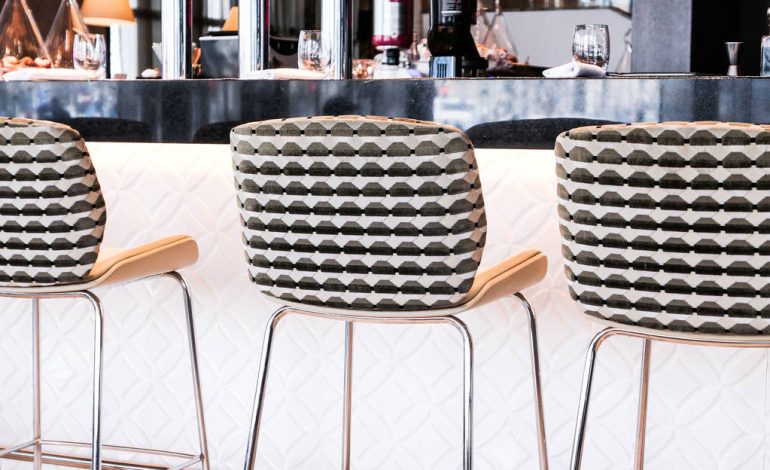
ERGONOMICS IN BARSTOOL DESIGN REVIEW
Bar stools are now a must-have in modern social settings, from hip bars to quaint kitchen counters. But often, the ergonomics of restaurant bar stools design should be addressed. The study of ergonomics, which looks at product design to maximize human performance and well-being, is essential to guaranteeing various sitting options’ functionality, safety, and comfort.
Understanding Ergonomics in BAR Stool Design
The main goal of ergonomic design principles is to customize items to meet the demands and capacities of consumers. When it comes to bar stools, this means taking into account different aspects, including body types, positions, and motions, in order to design sitting arrangements that encourage support and comfort.
Body Dimensions: Because people are not all the same size or shape, bar stools must be able to accommodate a variety of body forms. Stools with ergonomic designs take into account dimensions such as depth, width, and seat height to provide sufficient stability and support for users of different sizes.
Positions and Movements: Bar stools frequently provide dynamic seating, which makes it simple for users to move between various positions. Features like footrests and lumbar support are encouraged to be incorporated into ergonomic designs in order to support appropriate spinal alignment and lessen tiredness during extended hours of sitting.
Materials and Construction: The ergonomic performance of bar stools is greatly influenced by the materials and construction techniques used. Materials that provide adequate cushioning, breathability, and durability are given priority in ergonomic stool design, hence improving overall comfort and longevity.
The importance of Baar stool Consideration
1. Seat Height: To provide users with the best possible leg support and comfort, bar stools should line up with normal counter or bar heights.
2. Footrests: By placing footrests at the right heights, users may stay stable and relieve pressure on their lower back and legs.
3. Seat Width and Depth: Sufficient seat width and depth allow for a variety of body types to be accommodated, minimizing discomfort and encouraging good posture.
4. Back Support: Adding backrests or lumbar support improves spinal alignment and lowers the possibility of soreness or damage from extended sitting.
5. Material Selection: Selecting materials that are breathable and simple to clean improves user comfort and makes maintenance easier in areas with heavy usage.
BENEFITS OF ERGONOMICS BAR STOOL DESIGN
1. Enhanced Comfort: Bar stools with ergonomic designs lessen pressure points and encourage good posture, which lowers the possibility of tiredness and pain.
2. Increased Safety: Ergonomic stools reduce the chance of accidents or injuries brought on by incorrect seating by offering sufficient support and stability.
3. Enhanced Productivity: Bar stools that are both useful and comfortable enhance user satisfaction by promoting extended use and social interaction in a variety of contexts.
Conclusion
Designing bar stools with ergonomics in mind is crucial to producing seating options that are safe, comfortable, and meet a variety of user needs. Designers may improve the general user experience and foster wellbeing in communal places like pubs, restaurants, and home kitchens by considering elements like body types, postures, and material choices. Ergonomics enhances the comfort and usefulness of bar stools while also helping to create welcoming and inclusive spaces where people can easily unwind, mingle, and take in their surroundings.





